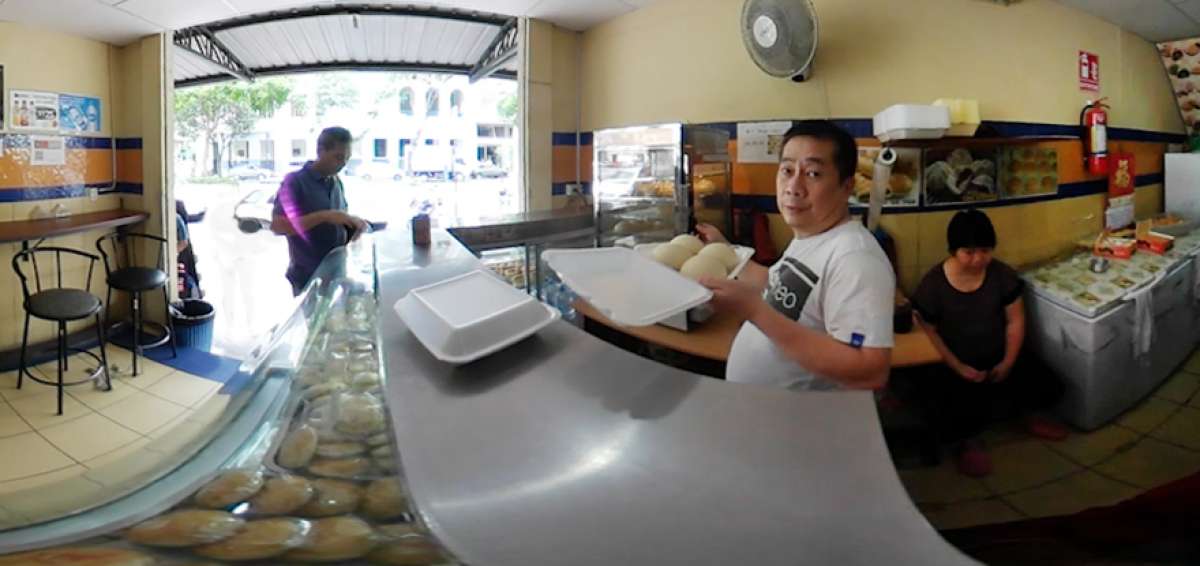Guayaquil has its own “Chinatown” in the heart of the commercial center
Ecuadornews:

The sector of the bay and the streets surrounding it are the point where the majority of Chinese citizens are concentrated within the Buenos Aires metropolis. If you want an approach with the Chinese culture, go to the center of Guayaquil.
There you will find signs written in Mandarin, grocery stores that offer vegetables and Asian objects, a bakery with its star product ” steamed bread ”, importers of clothes and electrical elements that invite residents and tourists to visit a Chinatown. From a colorful purse, some adornment for the living room of his house, to a complete clothing find in the so-called Chinese neighborhood, where dozens of citizens of this country offer their products at affordable prices in easy to identify places because they have striking red lamps.
Most of these places are located in the center of the Buenos Aires metropolis, on Sucre and Chimborazo streets; Pedro Carbo and Sucre; Columbus and Pedro Carbo; and on Olmedo Avenue, where the well-known Mall Bahía is located, in the latter, the concentration of Asian merchants is greater.
It is common to see the Chinese with cigarettes in hand, who from their shelves or desks observe the people who enter to buy an item in their premises, where it is normal to be served by Ecuadorians. There are also others who take their merchandise in large cardboards and with their little Spanish they suggest that it is an offer.
At that time the crowd comes first, to see if it is convenient for the merchandise at a discount. In this case the portfolios were striking at a price of $ 10. The Chinese cuisine arrived, liked and never left but not all are spare parts, clothing or ornaments, there are also those who decided to build their own restaurant, the well-known “chifas”.
There are three followed in Sucre and Pedro Carbo streets (Asia-Palacio de Oro and Ximalaya). Here the chaulafán (Fried Rice) is offered, a tasty Chinese-Ecuadorian invention that is only prepared in Ecuador. A space for Chinese sweets is in Sucre 506, between Chimborazo and Boyacá, where its owner Leonardo Lee (50) shares his pastry recipes not only with his compatriots but also with Ecuadorians who come to try their products.
Lee is originally from the province of Canton and came to Ecuador to be reunited with his parents and grandparents. “My family was first based in Quito, but we saw that in Guayaquil there was much more movement than in the capital.” In his business he offers 12 varieties of breads and sweets, such as bonyou, monocake, baozi and cha siu bao, steamed breads, recipes he learned from his father.
And while the diners come to the business to acquire these delights, Ruth Wong and her husband impart their knowledge about the religion they profess, Jehovah’s Witnesses, and they do so by giving magazines in Mandarin and Spanish. 150 years of cultural and commercial exchanges In Ecuador there are between 20,000 and 30,000 Chinese citizens settled in specific cities such as Quito, Guayaquil, Quevedo and Cuenca.
Most come from the south of the Asian country, from the province of Canton, according to figures from the Ecuadorian Chamber of Commerce China (CCEC). “It is not obligatory for the Chinese citizen to register with the consulate or the embassy,” says José Antonio Hidalgo, president of the CCEC, acknowledging that the data is estimated, collected from interviews and other sources.
Generally the Chinese migration worldwide is given by diasporas – explains Hidalgo – that is to say that it is concentrated in a single place, normally those of greater commercial influence, forming the well-known Chinese towns.
In the case of Guayaquil, in the part of La Bahía. Chinese citizens in Guayaquil have formed associations. One of them is the October 10 of the China Colony, its president Zhu Fu Ming says he feels an Ecuadorian more because of the reception and friendship he has done in this country. He arrived in Quito in 1985 at the invitation of a friend, who told him about the South American country. Zhu did not hesitate to embark on this adventure that he does not regret. “When I arrived in Ecuador, I had been working in Quito for two years; Then, I went to Guayaquil and the similarity of the climate with the province where I am from originally invited me to stay. Already in the nineties I brought my wife and my daughters were born here, “he says.
Benson Ma, president of the China Colony of Ecuador, agrees that the first compatriots who came to the country, some 150 years ago, came from the south, especially from Canton. “According to the data of the Chinese Society and Consulate, in Guayaquil there are between 6 and 7 thousand Chinese. Most of them are engaged in trade, “says Ma. He specifies that” from the 90s to the present, Chinese citizens form companies, bring their own capital, their technology, because China’s development was very fast, and now they have money to invest. “
In addition to chifas, bazaars and importers, a small part is dedicated to agriculture: they grow bananas, rice, African palm, he says. In the business in the center of Guayaquil, Zhu says that most of its owners do not speak Spanish and have focused on “knowing add, subtract, that is, be good with mathematics.” When asked if they sometimes look angry or not very sociable, Zhu smiles and justifies: “There are many who do not like to talk simply because they do not want to start a conversation, they just need to sell.”
According to Hidalgo, foreigners see several edges he mentions that there are 90 Chinese investment companies established in the country, in the infrastructure, telecommunications and oil sectors, of which there are 300 among its affiliates, including Chinese companies and Ecuadorian companies that have business with China.
80% of our affiliates are importers, mostly concentrated in Guayaquil. “But what attracts them? According to the head of the CCEC, dollarization, its strategic location and” that people are pleasant and do not feel discrimination. ” the Chamber, although they are focused on partners interested in initiating or strengthening commercial ties with the Asian giant and vice versa, to the small Chinese merchants in the country.
They guide you with information in your language. “Together with the SRI (Internal Revenue Service) we have trained in Mandarin,” he recalls.
DATA
Exports from Ecuador to China, in the last 5 years, recorded a significant average annual growth rate (TCPA) of 13.59% in values and 31.76% in quantities, according to Pro Ecuador.
The three main export sectors to China are: aquaculture, banana and forestry; and processed products, with a 58%, 11% and 9% share, respectively.
Non-oil exports to China went from $ 232 million, from January to June 2017, to 485 in the same period of 2018.
While non-oil imports, from 1536 in the first half of 2017 to 1955 in the same period of 2018. (I)
Source: https://www.eltelegrafo.com.ec/noticias/guayaquil/1/china-guayaquil-comercio





